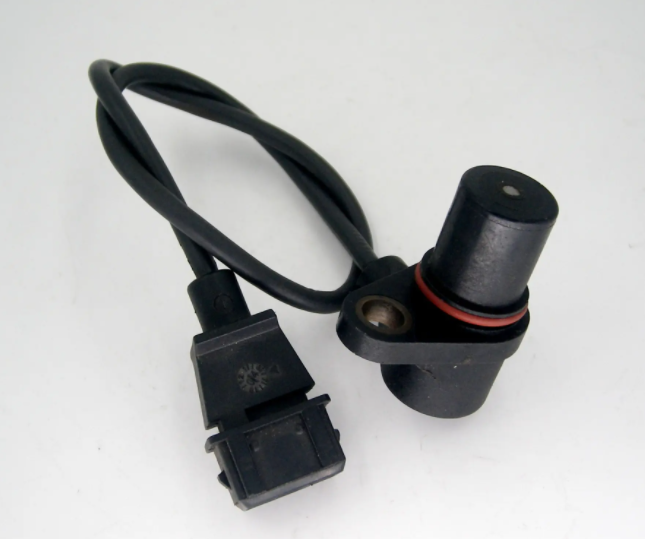Crankshaft sensor replacement cost can vary significantly based on various factors, such as the make and model of your vehicle, labor costs, and the price of the replacement part. In this article, we will explore the importance of replacing a faulty crankshaft sensor and provide a comprehensive guide on how to navigate the associated costs.
A failing crankshaft sensor can lead to numerous engine performance issues, making it crucial to address the problem promptly. One component that may be affected by a malfunctioning sensor is the crankshaft seals. A faulty sensor can cause excessive wear and tear on the seals, leading to oil leaks and potential engine damage.
Another engine component that may be impacted by a failing crankshaft sensor is the connecting rod bearings. These bearings play a vital role in ensuring smooth engine operation by reducing friction between the connecting rods and the crankshaft. A malfunctioning sensor can disrupt the proper functioning of these bearings, leading to engine performance issues and potential damage.
To maintain optimal engine performance, it is essential to invest in high-quality components, such as the Eagle crankshafts featured in Crankshaft Mastery: Exploring the Performance and Advantages of Eagle Crankshafts for Gasoline Engines. These crankshafts are designed to provide enhanced durability, performance, and reliability.

When determining the crankshaft sensor replacement cost for your vehicle, it is essential to consider the quality of the replacement part and the labor involved. While it may be tempting to opt for a cheaper part or DIY repair, investing in a professional replacement with high-quality components will ensure your engine’s longevity and performance.
In conclusion, understanding the importance of replacing a faulty crankshaft sensor and the associated costs is crucial for maintaining your vehicle’s engine performance. By investing in high-quality components and professional repairs, you can safeguard your engine and extend its lifespan.
Explore the world of connecting rods and crankshafts designed exclusively for gasoline-powered automotive and motorcycle engines. Learn how these vital engine components are manufactured and how they contribute to the seamless and efficient operation of your vehicle’s engine.
Mastering the manufacturing process of connecting rods and crankshafts involves multiple stages, including precision machining, forging, and heat treatment. Each step plays a crucial role in ensuring that these components perform optimally in gasoline engines, enhancing durability and reliability.
Connecting rods and crankshafts serve indispensable functions in your engine. Connecting rods are responsible for converting the pistons’ linear motion into the rotational motion of the crankshaft, whereas the crankshaft transforms this motion into usable power for propelling the vehicle. These two components work in harmony to provide a smooth and efficient driving experience.

Gasoline-focused connecting rods and crankshafts offer several key advantages for automotive and motorcycle engines. By using high-quality materials and manufacturing techniques, these components can improve engine performance, increase fuel efficiency, and reduce wear and tear. Consequently, your engine’s lifespan is extended, and its overall efficiency is maximized.
To experience the benefits of these specialized connecting rods and crankshafts, replace your existing components with these top-of-the-line products designed specifically for gasoline engines. You’ll quickly notice your engine performing better, delivering a more responsive and enjoyable driving experience.
In summary, connecting rods and crankshafts tailored for gasoline-powered engines are an excellent investment for those seeking to elevate their automotive or motorcycle engine’s performance. Upgrade your engine components to unlock your vehicle’s full potential and enjoy a superior driving experience like never before.
FEDA, a leading Chinese connecting rod and crankshaft supplier, specializes in producing high-quality components for gasoline-powered automotive and motorcycle engines. The exceptional quality and performance of their products contribute to their well-deserved reputation in the industry.
A key factor in the success of FEDA is their commitment to using advanced manufacturing techniques. Precision machining, forging, and heat treatment processes ensure that their connecting rods and crankshafts provide optimal performance, reliability, and longevity for both automotive and motorcycle engines.
-scaled.jpg)
Customers who have purchased and used FEDA’s connecting rods and crankshafts for their gasoline engines often report positive experiences with the products. These components contribute to improved engine performance, reduced wear and tear, and an extended engine lifespan. Many users appreciate the fact that FEDA offers reliable components at competitive prices.
Ms. Chen, a satisfied customer, shared her experience with FEDA’s connecting rods for her motorcycle: “My motorcycle’s engine runs smoother and more efficiently after installing FEDA’s connecting rods. I am very pleased with the noticeable improvement in performance and am confident that I have made a wise investment in a high-quality product.”
By focusing on quality and customer satisfaction, FEDA has established itself as a top choice for those seeking superior connecting rods and crankshafts for their gasoline-powered engines. The company’s dedication to providing reliable components ensures that vehicle owners can enjoy optimal engine performance and longevity.
Investing in FEDA’s components not only guarantees that your engine receives the best possible care, but also provides peace of mind that you have chosen a manufacturer that values customer satisfaction and product excellence. Don’t hesitate to explore FEDA’s extensive range of products, as they can offer the perfect solution to meet your specific needs for automotive and motorcycle gasoline engines.